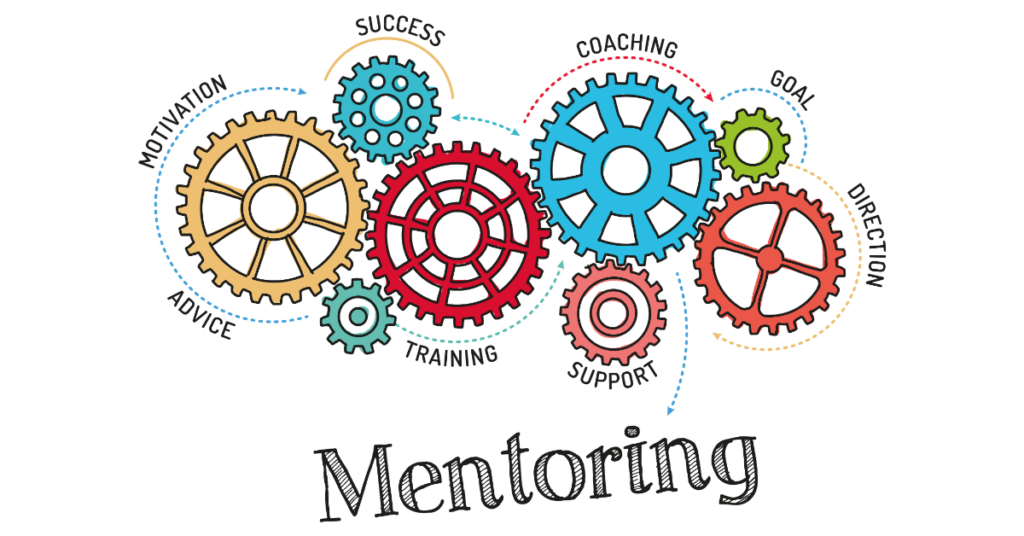I see you. You’ve been thinking about up-leveling your organization’s analytics training. More specifically, you recognize that having data-literate staff across the organization will be critical to your future success. Now your biggest question is…where do I start? I’ve got your back. As the title says, this article is about 6 easy steps to start your organization-wide analytics training journey. If you need to read more about organization-wide analytics training, click here.
Step 1: Establish Clear Objectives
You’ve heard the saying it’s not about the destination, it’s about the journey? Well, this is one of those times when it is about the destination.
Like any other business goal, you need to set clear objectives and goals for your organization-wide training program.
Your objectives might include ideas like:
- Increasing data literacy across all departments
- Increasing everyday data-driven decision-making
- Improving operational efficiency through data analysis
- Strengthening competitive advantage through market insights
These objectives make sense, but they read like your typical bullet-point business objectives. That means you’re not done yet.
You need to connect your objectives to specific and tangible outcomes for your business.
To figure out which tangible outcomes are best aligned, ask yourself this question:
“If my training program achieves its objectives, what will that result look like in terms of specific metrics?”
Specific metrics might include:
- Increasing data literacy assessment scores by 20 points
- Increasing internal requests for analytics increase by 30 percent
- Reducing your throughput time for client projects by 15 percent
- Increase your Net Promoter Score® by 25 points[1]
If you need help articulating your objectives as specific metrics, do a search online for SMART goals. The results will help you with this step.
By connecting specific metrics with your objectives, you are defining what success looks like. With these outcomes in mind, you’re set up to create a focused and purpose-driven training program to meet your needs.
Step 2: Assess Current Analytics Capabilities
Now that you set the stage, it’s time to roll up your sleeves.
You don’t want to reinvent the wheel if you don’t have to. So, it’s time to take a hard look at your current skills and tools to catalog your current capabilities.
Comparing your current capabilities to your training objectives and goals will highlight your organizational training needs. You’ll also find if any data infrastructure needs updating.
Your assessment of current capabilities requires three (3) phases:
- Workforce Data Literacy Assessment
- Systems Readiness Review
- Stakeholder Perspectives
Start off with a data literacy assessment of your current workforce.
The assessment results will show you the skill sets your organization currently has. With this information, you can determine what you analytics training program needs to achieve.
Next, you’ll need to conduct a readiness review of your data systems. This critical piece is often overlooked during the planning stage, which can cause problems later on.
You wouldn’t hire a data scientist and then give her data written on 3×5 cards and an abacus for analysis.
You’d want to make sure she had the data systems and analytic software to do the job.
The readiness review determines the state of your current data infrastructure and whether it’s capable of doing the job you want.
Your readiness review should include all hardware, software, and existing programming code.
Finally, you want to have buy-in from organizational stakeholders for your analytics training.
Talk to business unit and team leads to identify their perspectives on what is needed for organization-wide analytics training.
I recommend doing this step last. That way you can discuss it if stakeholder perceptions don’t align with the data literacy assessment or readiness review.
If you work through these steps carefully, you’ll develop a rock-solid picture of your current analytic capabilities. Compare the readiness review results to your objectives and goals (Step 1), and you’ll have mapped your analytics training journey.
Step 3: Define the Analytics Curriculum
Now that you know where you are and where you want to go, it’s time to pack your bags.
Specifically, you need to determine the curriculum necessary to start organization-wide analytics training.
Your curriculum needs to reflect that employees in different roles have different skill sets and needs.
Your analysts might not need basic data literacy training, but could benefit from deeper training in data science programming.
In contrast, your project coordinators, managers, and possibly members of leadership could benefit from stronger knowledge of analytic foundations.
Your analytics training curriculum will need to accommodate these differences.
Keep in mind that because of these different needs across functional roles, you might need different training programs to achieve your goals.
There are lots of data science and analyst curricula available, but very few good programs teaching analytic foundations for leadership.
If you’re not sure how to proceed with identifying or developing a curriculum, reach out to us here at F1 Analytics. We’re happy to discuss what your goals are, and answer questions about this important stage of planning.
As an alternative you can also reach out to your local college or university faculty to identify the latest tools and techniques for achieving your goals.
Step 4: Implement the Training Program
You’ve reached that point where it’s time to start the organization-wide analytics training journey: implementation! This involves a few important steps.
Begin by scheduling a roll-out meeting for your staff. During the roll-out, you need to communicate:
- Why training is necessary
- What the goals and objectives are
- Who is receiving training
- How the training will benefit them
- Timelines for the training
- How to access materials and participate
- Your expectations for participation and engagement
The last bullet in that list is particularly important: setting your expectations for participation and engagement.
Some staff may feel anxious to learn about analytics. They might have had a bad experience during a previous course.
Other staff may believe their knowledge is sufficient and push back on participating.
As a leader, your job is to create a supportive environment that encourages participation, engagement, and feedback for everyone.
Be sure to let your nervous staff know the limits of what they’ll be expected to do. If they aren’t analysts, you can emphasize that they won’t be asked to become one.
For the staff who know everything already, emphasize their need to use these skills more in the future. Encourage them to knock the rust off and take the opportunity to prepare before they have to perform.
Once you have the team prepped and ready to go, schedule the training sessions and begin the process.
Make sure that your curriculum provides lots of opportunities for engagement and participation. You don’t want anyone to check out or slack off because of boredom.
You’ll want to include lots of interactivity and practical exercises to enhance the learning experience. In fact, I recommend below that you focus attention on making staff create an analytic project during the training.
This should be the fun part for everyone, so take the time to really get involved in supporting your team.
Step 5: Monitor Progress and Gather Feedback
You didn’t think we could start your organization-wide analytics training without getting into the data ourselves, did you?
After all, if you’re trying to build a stronger data-driven culture, then own it and lead that change by example.
When you develop your curriculum, build in mechanisms to assess the effectiveness of the training program.
Your staff can demonstrate their learning progress through quizzes, practical projects, and assessments.
Ideally, you want to tie training improvements to the metrics you defined in Step 1. So align your progress monitoring tools with those goals.
In addition to monitoring staff progress through the training, you’ll want to know their thoughts about the training.
Be sure to create opportunities for staff to provide feedback. Ask them directly to tell you their:
- Perceptions of the content
- Areas with challenges
- Suggestions for enhancements
If staff are hesitant to provide feedback, remind them that this is to help them become more successful.
Ask them to help make future sessions better, both for themselves and for future staff.
Finally, you can’t very well measure progress without asking about return on investment (ROI).
If your assessment tools are aligned with the training objectives and goals, you can develop estimates of ROI.
Specifically, you can determine whether learning improvements across various staff are related to improvements in outcome metrics.
By converting your outcome metrics into monetary values, you’ll have good insight into the return from your investment in the program.
Step 6: Apply Learned Skills to Real Projects
There is one final element I want to discuss as you start your organization-wide analytics training program.
The most common question I have ever heard in any corporate training is:
“How does this apply to what I am doing now?”
This question is most likely when it’s not clear how the analytics connects to staff role.
Because of this, I recommend that every participant in organization-wide analytics training develop an applied project.
More specifically, staff should work with their team leads and leadership to identify practical use cases in the business.
When staff learn in the context of a real-world project, the relevance of the content will be very apparent.
Using real-world applications from the business will also drive home the importance of fostering a data-driven culture.
Finally, as organization-wide analytics training improves staff skills, they often display an interest in learning more.
You can capitalize on this to drive forward a culture of continuous learning across the organization.
Once that ball starts rolling, it begins to take on a life of its own. And your customers, your team, and your bottom line will benefit.
Conclusion
There you have it: six (6) steps to start your organization-wide analytics training program.
If you started this article not knowing what to do next, you can’t say that anymore.
But be forewarned, implementing an organization-wide analytics training program can lead to dramatic changes. Such changes might include:
- A data-driven decision-making culture
- Improved efficiency
- Stronger innovation
- More satisfied customers and staff
- Greater competitive advantage
Using this strategy, you’ll set in motion a process that will strengthen your entire organization. Everyone wins, my friend, when you develop the right skills in the right roles and boost analytic knowledge across the board.
[1] Net Promoter Score is a registered trademark of Bain & Company, Inc., NICE Systems, Inc., and Fred Reichheld.



